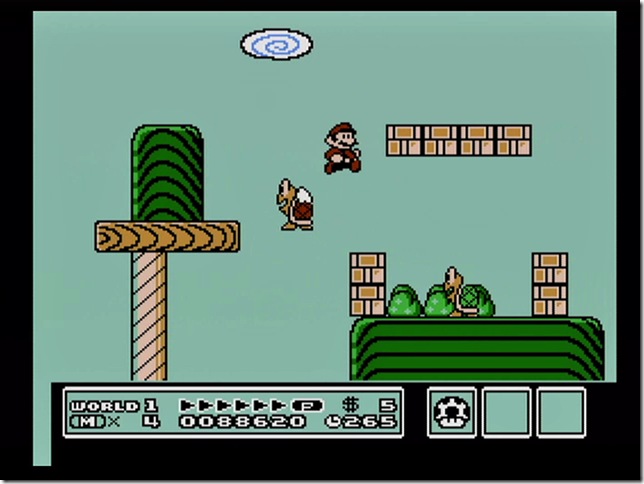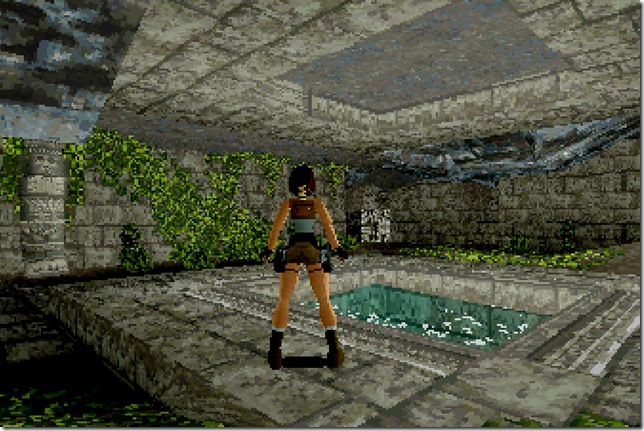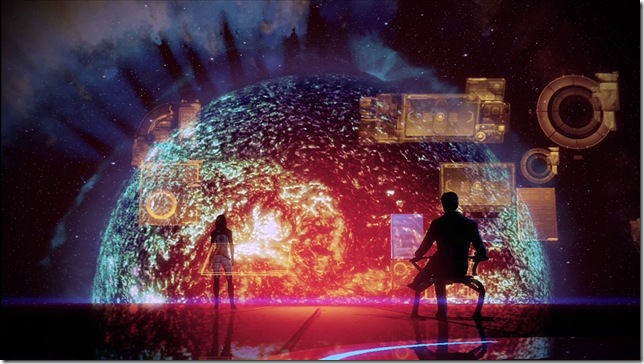Something has happened to the Boca Raton Museum of Art. Its latest exhibit is making it look, in one word, cool.
Old and new game systems, vivid graphics, game tactics, music scores and creative storylines are all showcased in the dynamic and highly interactive show The Art of Video Games. The Boca Raton museum is the first in the nation to host the exhibit, which will tour 10 American cities.
The show features 80 video games selected by a public vote involving millions of people and includes five playable games representing different innovation periods in the history of video games. Video interviews offer a glimpse inside the minds of game developers, designers, artists and other people doing their magic behind the scene.
The first of the featured playable games is a classic: Pac-Man. It was the first game to gain high popularity among women and men, committed and casual gamers. The maze-chase format was new and revolutionary given that video arcade games at the time were dominated by space shooters. It was here that I ran into a mature woman by the name of Elise Jackson who would not let go of the controller. She turned out to be a very enthusiastic gamer.
Past Pac-Man, Super Mario Brothers, The Secret Monkey Island and Myst, we find Flower. This game from 2009 blew my mind because of its calm beauty and unusual approach. Director Jenova Chen’s dreamy world was not created just as a backdrop but specifically to draw a personal emotional reaction from the person holding the controller. This is why the player is placed in the role of the wind. Every single movement of the hand leads to changes in the screen.
But experiences like this one do not come until later in the show. At the beginning, we are introduced to the exhibit the way a player would tackle a new game: by learning basic elements.
We learn that jumping to avoid obstacles has been a common feature of action adventure games since the start and that the landscape sets the tone for the action and narrative. Running adds tension and excitement to the playing experience and was among the first features to emerge for character movement. Technological advances continue adding features such as crawling and avatars, which allows a stronger relationship between game and player.
Sill images and footage from video games follow in chronological order next to a particular gaming system of the corresponding years. We begin with Atari VCS (1977), Coleco Vision (1982), Commodore 64 (1982) before moving on to Nintendo, SEGA, PlayStation, XBox, Wii and more updated versions of the same.
Each system invites us to stop and look at the evolving aspects that led to better games.
Take the 1996 game Tomb Raider, which introduced the first widely-popular female protagonist in a genre ruled by male characters. The game featured a better quality, cut-scenes with full dialogue that translated into better storytelling, close-range action and dramatic tension. All of this was possible thanks to the CD-ROM format. The game system at that time was SEGA Saturn (1995).
Cut-scenes, which help frame the narrative of a game, were not always elaborate and efficient when delivering pieces of information. Today they are more engaging and even have their own orchestral scores, as in the case of the game Halo 2 (2004).
Characters in a game may be either faceless so that players imagine themselves in the role or emphasized to convey a distinctive personality. Today players can customize their personality as well as appearance. A 2010 game called Mass Effect even lets us pick gender, race and skill in addition to appearance.
Mass Effect is cited in the show as one striking fusion of technology and art. One look at the still image and footage is enough to convert me ― and I am not a gamer. Its visuals are gorgeous and incredibly realistic. The game features photorealistic characters and atmospheric use of color and light.
During one video interview someone is heard saying that today the music experience in video games is more intense and diverse than ever. For example, rather than having a steady constant tune playing through an entire game, music can now change depending on the path the character/player takes in a game. This was never possible before. The interviewed person goes on to say that if Beethoven were alive today he would be a video game composer.
When it first opened at the Smithsonian American Art Museum in Washington last March, The Art of Video Games was a tremendous success, attracting more than half a million visitors. Even so, one still wonders if a museum is really the place to show this sort of exhibit.
The answer is yes, if you believe video games are art, as does Chris Melissinos, the curator for the show. Melissinos is the founder of Past Pixels and owns more than 40 gaming systems and hundreds of games.
Taken individually, each element of their creation (graphics, music, storyline) is a task that requires a skilled artist. Why then, should we not consider the result of their combined collaboration a valid art form? A genuine form of expression?
Whether you believe a museum ought to be reserved for serious works of art and quiet interpretation, one thing is clear: the museum experience can be fun. It does not mean museums should not have room for the traditional art viewer experience. They ought to simply look for ways to include non-traditional museum goers and not give up on them.
The beauty of this show, and I suppose video games in general, is that it exposes the viewer to different worlds within the world of video games. There is the music aspect of it, which can be comical and light or very moving and deep.
There is the writing that shapes the dialogues and makes the plot sound ancient, interesting and mysterious. Most games begin with a series of sketches/drawings of characters’ features, architecture and landscape. The list goes on. And that is the main intent of the show: To help us understand that video games are much more than what we originally thought when they first showed up.
The Art of Video Games runs through Jan. 13 at the Boca Raton Museum of Art. Admission is $8 for adults, $6 seniors, $4 students. Hours: 10 a.m. to 5 p.m. Tuesday, Thursday and Friday; 10 a.m. to 8 p.m. first Wednesday of the month; 12 p.m. to 5 p.m. Saturday and Sunday. Call 561-392-2500 or visit www.bocamuseum.org.


